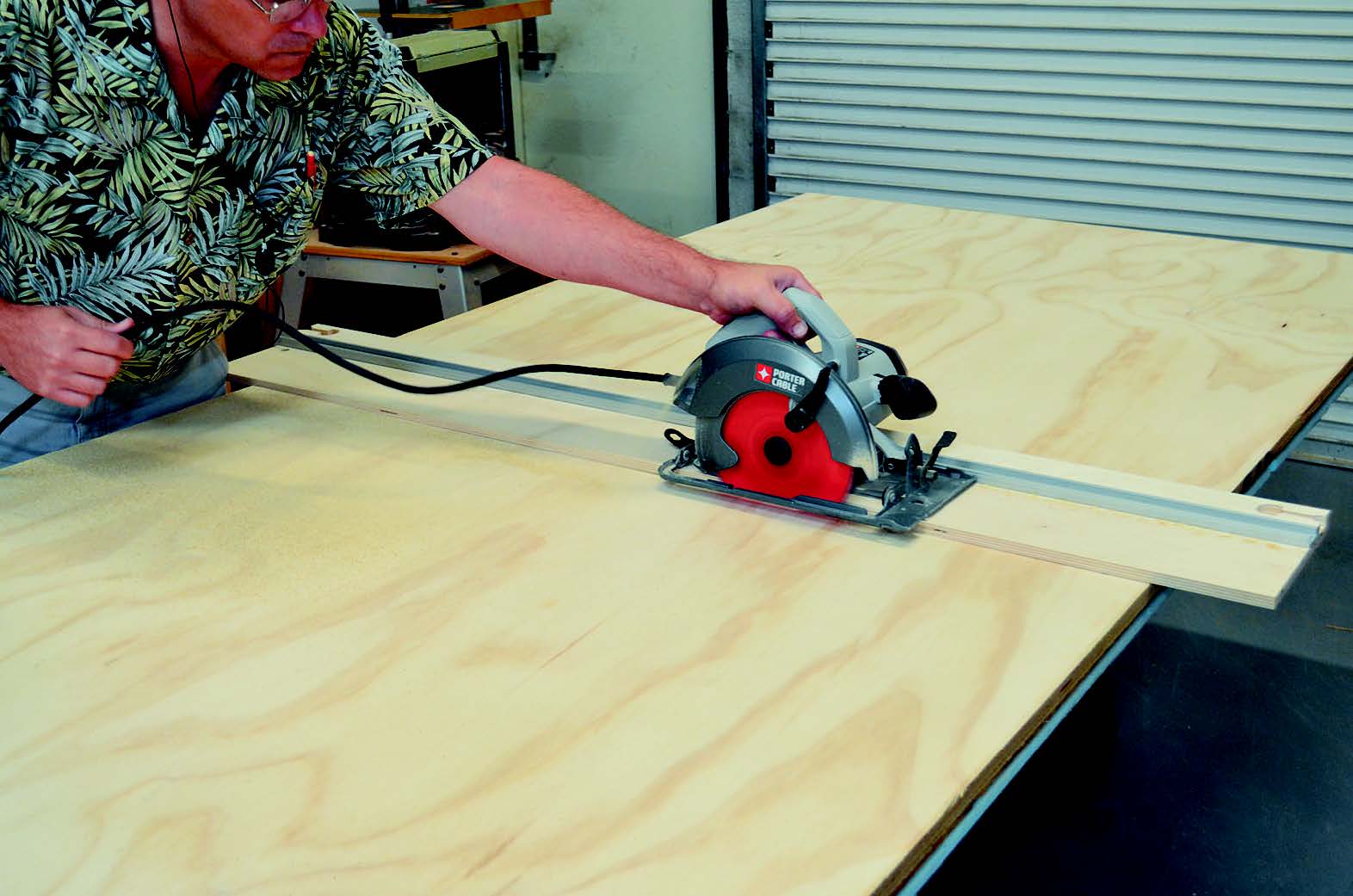
When cutting plywood on a table saw, I always seem to make terrible cuts. The wood splinters on top as the blade comes up on the backside of the blade. And when I turn the plywood over it is also splintered. I’ve tried new blades … same thing.
John English: There are several possible reasons why you are having this trouble. Let’s begin with the wood splintering on top as the blade comes up on the backside of the blade. If this splintering is only on one side of the kerf (the saw cut), your blade may not be parallel to the fence. Check that the fence is truly at 90 degrees to the front edge of the table. If it is, then perhaps your motor is not mounted square to the table. You can check this by seeing if the blade is at 90 degrees to the front of the table.
If the tearout is on both sides of the kerf, your blade is wobbling. That means the arbor may be bent, or the blade isn’t seating properly (check for burrs and built-up grime).
Once you have diagnosed and solved the topside splintering, you can tackle the problem on the bottom face of the plywood. This one is a lot easier to deal with. Make two passes: the first one, have the blade height set at 1/8 inch. This is called scoring. You cut through the top layer of veneer (the first ply), using the rest of the material to back up your cut. For the second cut, raise the blade to cut all the way through the sheet.
Simon Watts: There are blades made especially for cutting plywood: It might be worth your while to invest in one.
Michael Dresdner: It sounds as if your saw is “heeling.” That means the blade is not exactly parallel to the fence, and the back edge (heel) of the blade is hitting the wood after the cut is made. That would explain the splintering. Try setting up the saw again, aligning the blade exactly parallel to both the fence and the table slots. As for splintering on the bottom, you can avoid that by investing in a high alternate bevel grind blade, a specialty blade designed to cut melamine and veneered wood without splintering.
Ellis Walentine: You didn’t mention what kind of blade you’re using, but a good 80-tooth blade with a low or negative rake should do the trick. If that’s what you’re using now, it may be time to tune up your table saw. Make sure the top is aligned with the blade and the fence is aligned with the top.
Lee Grindinger: Your fence is not parallel with the blade. Check your table first by marking one tooth of the saw blade after raising the blade all the way and disconnecting the power to your saw. Using a dial indicator, a steel rule, calipers or combination square check that the distance from the tooth you marked to the groove in your saw table is precisely the same at the front of the blade as it is at the rear. Make sure you check this using the tooth you marked. Readjust the table if you need to. Most saw tables are held in place with four bolts at the corners but some saws require that you move the trunion assembly. Take the time to do this, it’ll pay off in smooth and accurate cuts down the road. Now you want to set the fence so it’s dead-on parallel with the groove in your saw table. Any variation in parallel between your fence and your blade will cause your stock to track crosswise through your blade and this is where your tearout is being caused.
Check the arbor bearings, too. With the saw disconnected from the power grasp the blade and check for any wobble. There should be no wobble whatsoever. If there is wobble the arbor bearings need to be replaced. Check your belts for wear as well. Worn belts can create vibration that can result in lousy cuts.





